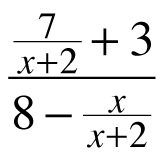On growth mindset
If we are telling students that it is important for them to develop perseverance and grit or grow new dendrites to get smarter, but the system remains stacked against them, is that really a healthy perspective to promote? From the point of view of students of color and historically looted students, does that just sound like a new version of “pull yourself up by your bootstraps”?
Gutierrez, Political Conocimiento for Teaching Mathematics
“Our brain grows when we make mistakes” is not a helpful message for students. The majority of the time, these student aren’t making mistakes, they are building understanding. Rough drafts are not mistakes and classifying student thinking as a mistake can distract us from what students actually do understand.
Compounding this difference of perspective about growth mindset is our focus on time. We are used to disequilibrium being resolved in a 45 minute class period, or an episode of our favorite sitcom, or between the warm-up and the cool-down, or the pre-test and the post-test. We grow slowly and continuously over time – through consistency and revisions to our thinking mixed with reflection and experience
Growth mindset can be constructive, provided that we recognize its limitations. Instead of telling students their brain grows when they make mistakes, we need to support students in making revisions to their thinking, build from their strengths and enable them the time and support for all students to see and believe in their own brilliance.
How can instructional routines help?
In my early years of teaching, I became aware that my default way of functioning as a teacher was closely aligned to what I experienced in my time as a student. I struggled to try new strategies and get them to stick, being constantly torn between striving to implement new strategies and trying to do no harm to the amazing teenagers under my influence. When trying something new, if it doesn’t go well the first few times, I would resort to more familiar, and less ambitious, methods.
With instructional routines, my students and I committed to working through a set of thoughtfully planned interactions regularly with varying, and carefully selected content. Through this consistency, I was able to reflect and make minor adjustments to the routines – the wording of a question, wait time, when to pair students or allow individual think time – to make these interactions increasingly effective.
Isn’t this what you think of when you hear about growth mindset? Long term, thoughtful revisions to improve a technique, or approach – not a quick fix of a “mistake.” Let’s model this behavior.
What does anxiety have to do with it?
Being an adolescent is hard. They’re realizing that their parents are not as perfect as they thought, their body is changing, they’re trying to decide how they fit in society and in the social groups at their school. The National Institutes of Health reports that one in four thirteen-eighteen year olds have anxiety, which can be presented as: ADHD, disruptions, off task behavior, shutting down, shouting out, substance abuse, or depression. Understanding the role anxiety plays in behavior is crucial to creating a safe environment.
Unstructured time and transitions are two primary triggers for students with anxiety. Once anxiety has set in, students working memory declines, making it difficult for them to recall or retain information, initiating a downward spiral for that class period. Routines can be a critical component in preventing the onset of student anxiety and creating a predictable and safe class environment.
Teaching is a stressful job, and anxiety is common among teachers too, impacting our working memory and hindering our ability to be aware of everything happening in our classroom. Like when I am late for work and can no longer remember where I left the car keys, frantically running around the house unable to think clearly. Routines help us too, reducing the cognitive load of every interaction in a lesson and using to a familiar format that’s been adapted to work for your personal style, making space to be able to pay attention to student thinking instead of behavior management.
Bridging from research to action
Thoughtfully selected, developed, or adapted instructional routines, implemented regularly, can help manage student’s anxiety and build on their strengths to authentically develop students confidence and persistence. Over time, teachers build confidence implementing certain routines and student adjust to the expectations of the routines understanding how to find success leading to their development as a mathematician and contributing human being.
I’ll be presenting on this topic with Dylan Kane at NCTM Regionals where we will practice a few routines that allow students to see their own brilliance and discuss many more while considering how they can be adapted to fit your own classroom.
Come join the discussion in our session at NCTM Regionals in Seattle:
Anxiety, Mindset, and Motivation: Bridging from Research to Action
November 30, 2018 | 9:45-11:00 a.m. in Washington State Convention Center, 606
Developing a supportive class culture and growth mindset can reduce students’ anxiety, allowing learners to engage thoughtfully with each other around mathematics. Participants will discuss the challenges of shifting mindsets, experience routines as learners and leave with resources and ideas to implement these structures in their classroom.
























